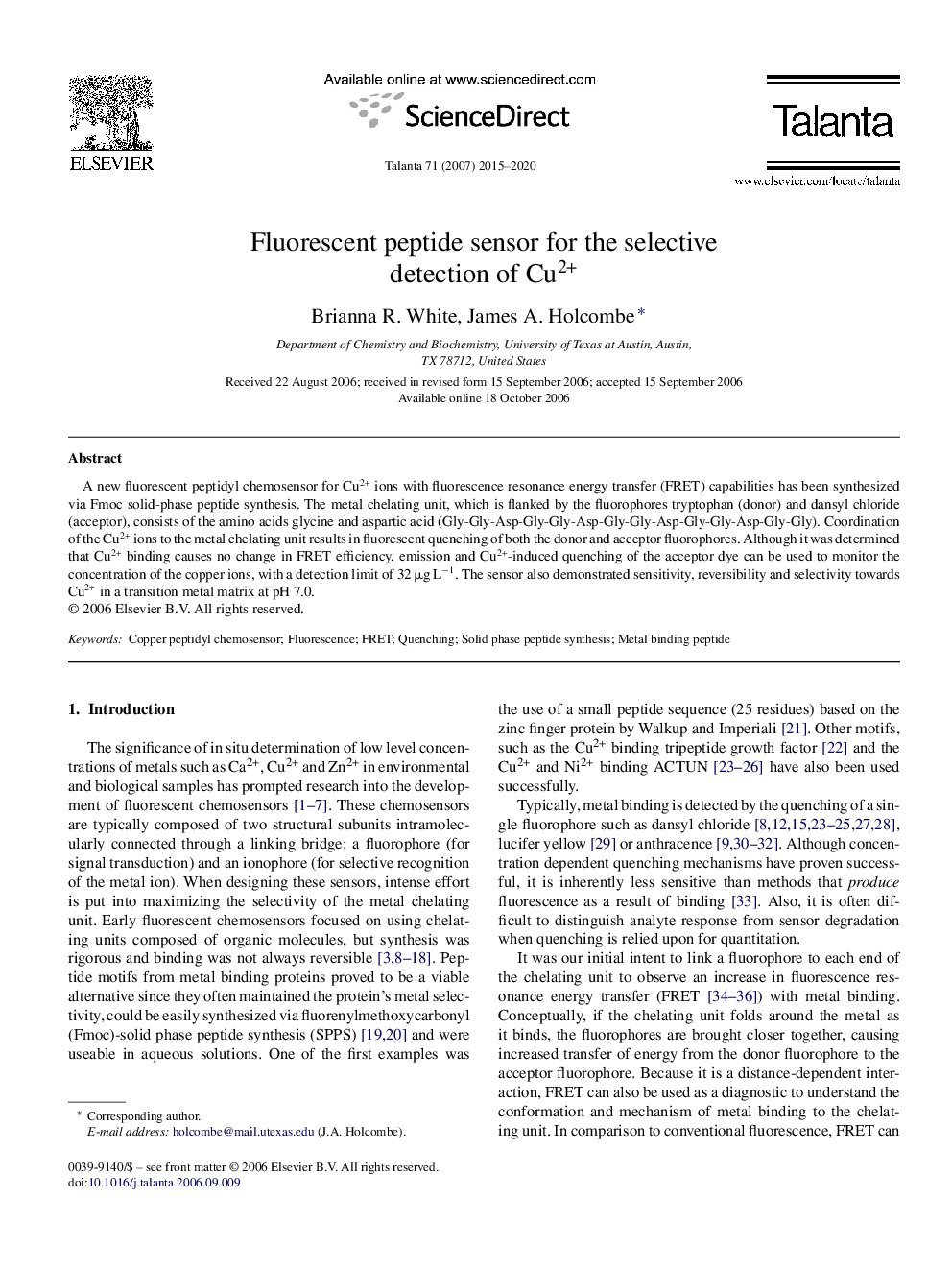| Article ID | Journal | Published Year | Pages | File Type |
|---|---|---|---|---|
| 1245921 | Talanta | 2015 | 6 Pages |
A new fluorescent peptidyl chemosensor for Cu2+ ions with fluorescence resonance energy transfer (FRET) capabilities has been synthesized via Fmoc solid-phase peptide synthesis. The metal chelating unit, which is flanked by the fluorophores tryptophan (donor) and dansyl chloride (acceptor), consists of the amino acids glycine and aspartic acid (Gly-Gly-Asp-Gly-Gly-Asp-Gly-Gly-Asp-Gly-Gly-Asp-Gly-Gly). Coordination of the Cu2+ ions to the metal chelating unit results in fluorescent quenching of both the donor and acceptor fluorophores. Although it was determined that Cu2+ binding causes no change in FRET efficiency, emission and Cu2+-induced quenching of the acceptor dye can be used to monitor the concentration of the copper ions, with a detection limit of 32 μg L−1. The sensor also demonstrated sensitivity, reversibility and selectivity towards Cu2+ in a transition metal matrix at pH 7.0.
